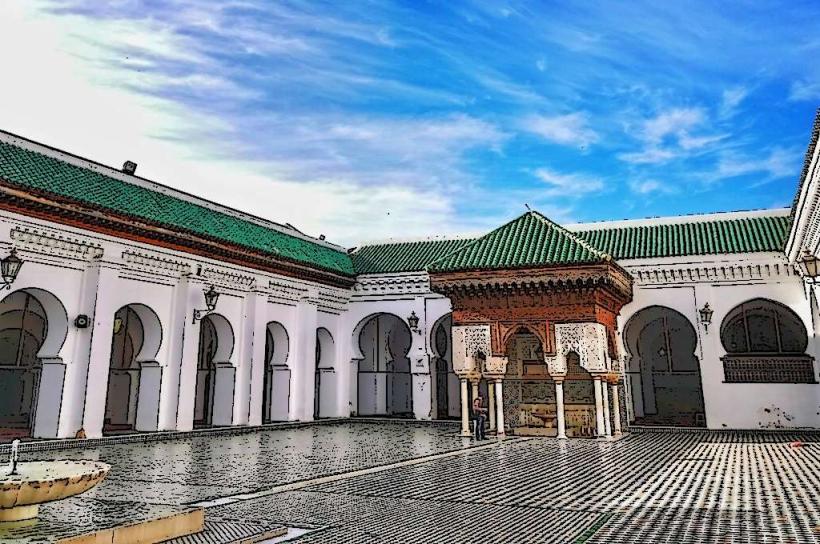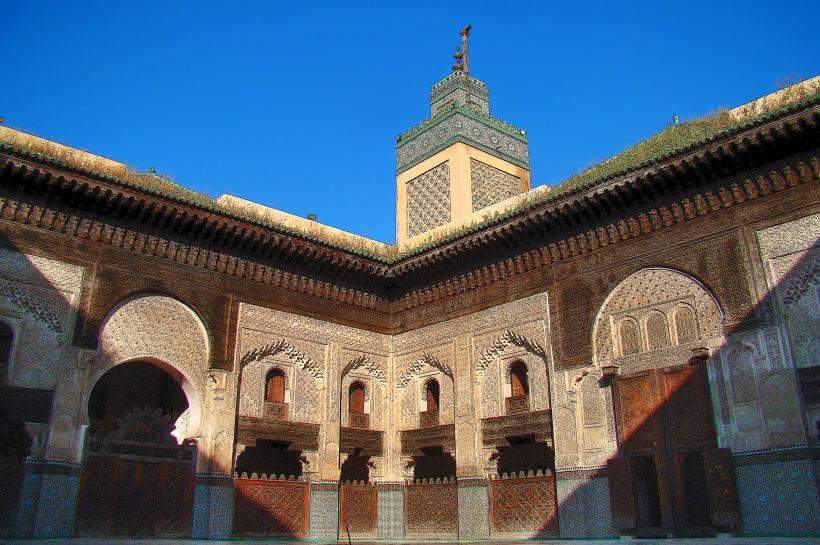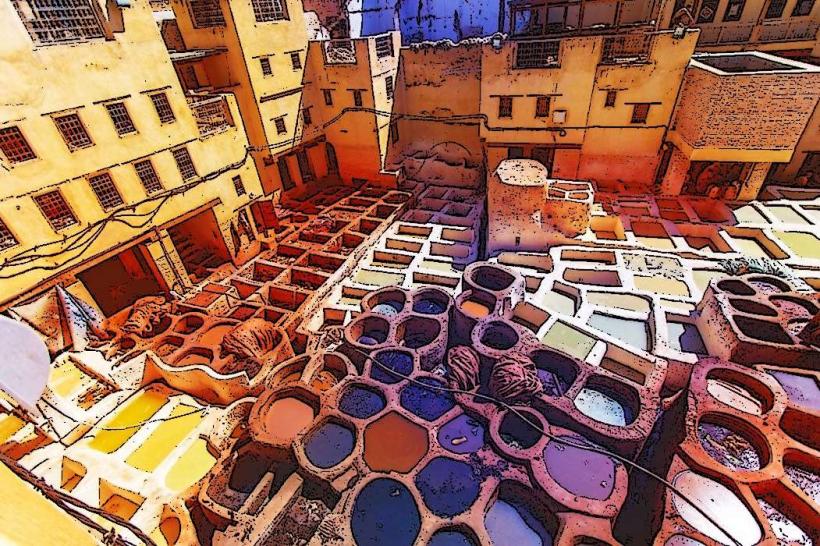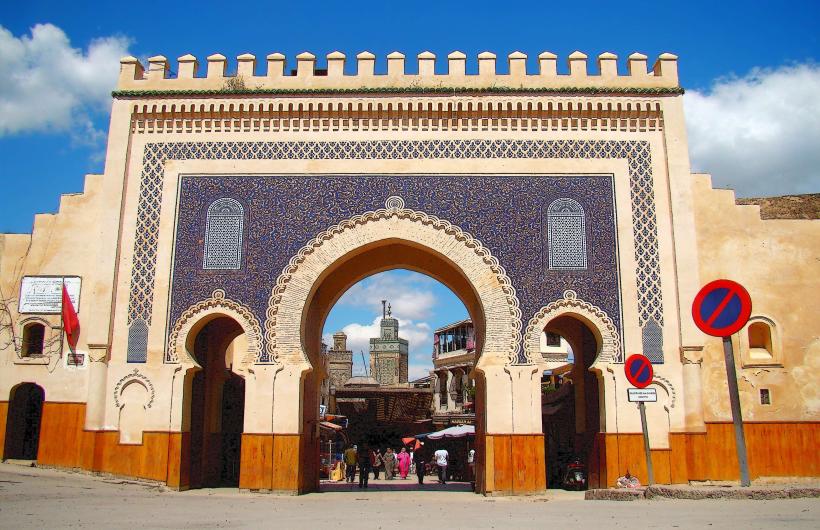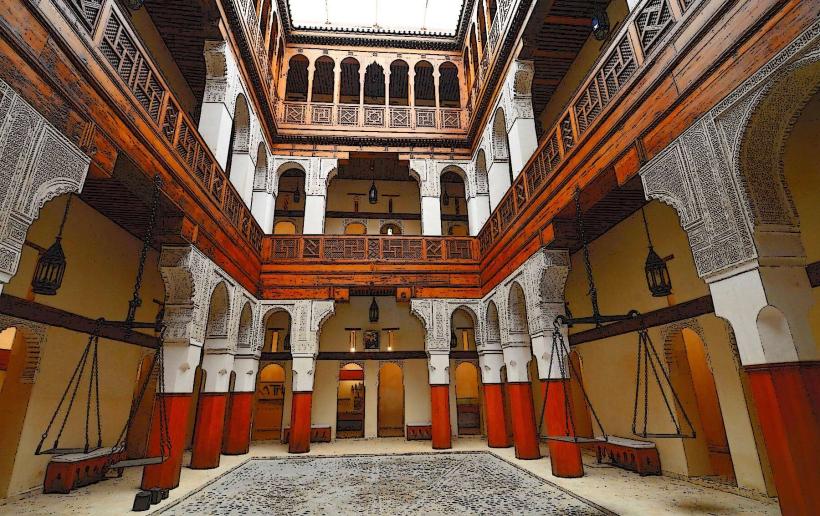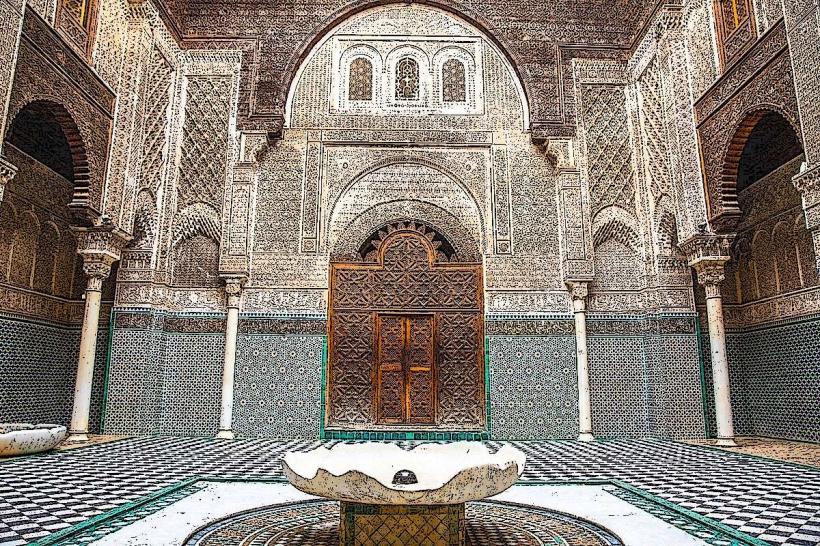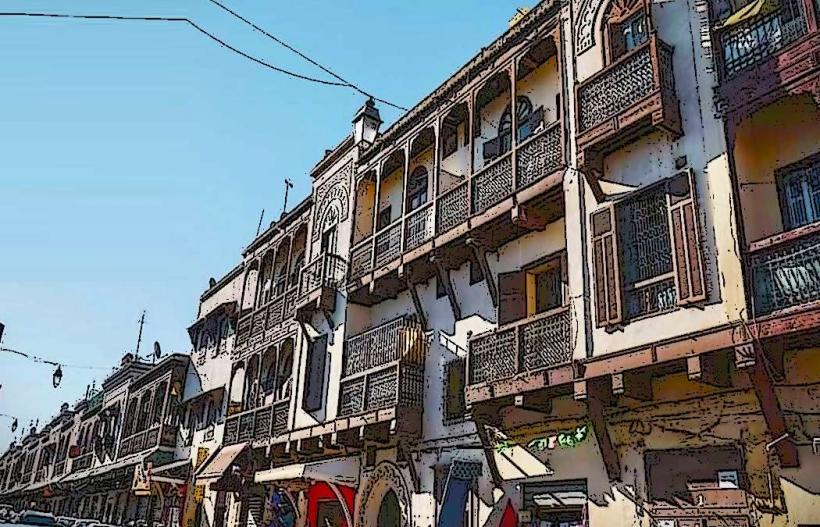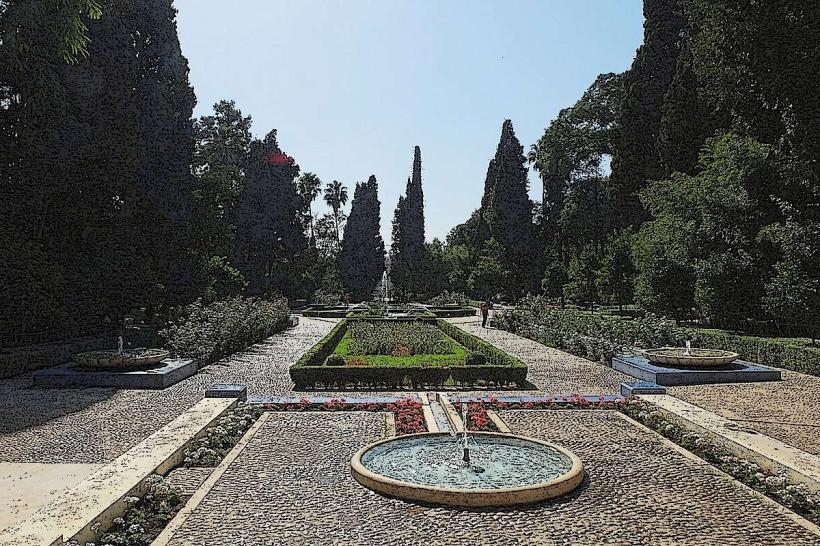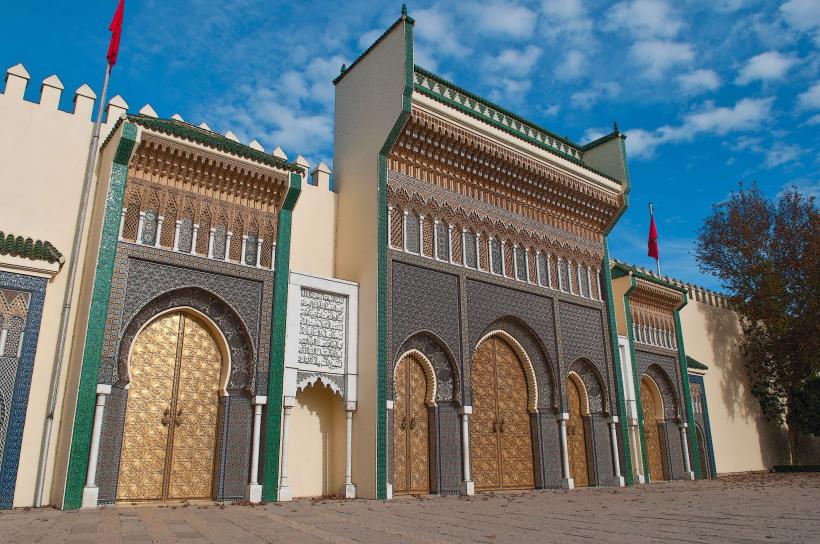Information
Landmark: Dar Batha MuseumCity: Fes
Country: Morocco
Continent: Africa
Dar Batha Museum, Fes, Morocco, Africa
Overview
In the heart of Fes, the Dar Batha Museum houses a treasure of traditional Moroccan art and craftsmanship, from intricate zellij tilework to delicate embroidered textiles, at the same time the museum occupies a breathtaking former palace, its marble halls echoing with history, and stands among the city’s most treasured cultural institutions.The museum began life as a royal palace, built by Sultan Moulay Hassan I in the late 1800s, its stone walls still holding the echo of footsteps from another era, therefore his successor, Sultan Moulay Abdelaziz, oversaw the final stages of construction, which wrapped up between 1886 and 1907, as dust still clung to the newly carved stone.The palace showcases Hispano-Moorish design, weaving Spanish and Moroccan influences into vivid mosaics, carved plaster that catches the light, and courtyards thick with greenery, while in 1915, the palace became a museum, among the first in Morocco to share its vibrant artistic and cultural heritage-rooms once echoing with royal footsteps now displayed intricate carpets and carved cedar panels, for the most part The Dar Batha Museum sits just steps from Bab Bou Jeloud, the blue-tiled main gate into Fes’s medina, making it a convenient starting point for exploring the antique city, as well as the Dar Batha Museum captures the French colonial administration’s vision-preserving Morocco’s history and cultural treasures, from intricate zellij tiles to carved cedar doors, while drawing visitors and fostering learning.It marks the move from secluded royal palaces to lively public cultural spaces, where Morocco’s history, intricate craftsmanship, and long-held traditions come alive in the shimmer of carved tile and polished brass, as a result at the Dar Batha Museum, you’ll find more than 6,500 pieces-intricate carpets, gleaming ceramics, and other treasures-telling the story of Moroccan art, craft, and history.Step inside the museum and you’ll uncover Morocco’s cultural and artistic story, from the ornate calligraphy of its Islamic heritage to the earthy patterns rooted in Berber tradition, in addition here’s what stands out first: 1.The museum showcases a world-famous collection of Fes blue ceramics, their deep cobalt patterns catching the light like ripples on water, at the same time these pieces stand out for their deep cobalt blue, a color that’s marked Fes pottery since the 10th century, as vivid as fresh ink on white parchment.The collection features vases, plates, bowls, and tiles, each decorated with intricate geometric patterns and crafted using pottery techniques passed down for generations, their surfaces smooth and cool to the touch, after that many of the ceramics carry graceful Islamic calligraphy alongside sharp, interlocking patterns, each piece echoing the rich symbolism at the heart of Moroccan art.Number two, what’s more in the woodwork and carpentry section, the museum showcases finely crafted doors, windows, and panels, their surfaces alive with mosaic tiles and delicate carved patterns.You can view Morocco’s finest woodcraft in these pieces, the same intricate techniques that grace the carved doors and cedar ceilings of Fes’s palaces, mosques, and madrasas, after that among the highlights are the palace’s painted ceilings and intricate stucco work, where gold leaf catches the light and offers visitors a vivid glimpse of its architectural elegance.Number three, on top of that the museum’s textile collection is a standout, showcasing rich Moroccan carpets, intricate kilims, and embroidery so fine you can almost feel the threads between your fingers.These textiles burst with vibrant color, sharp geometric shapes, and finely detailed designs-hallmarks of Moroccan craftsmanship you might spot in a sunlit Marrakesh market, after that these textiles offer a glimpse into Morocco’s Berber and Arab heritage, each region weaving its own distinct patterns and methods-luminous reds from the mountains, intricate knots from the desert.Truthfully, Number four, therefore the museum showcases treasures from the Islamic world, from worn leather-bound Qur’ans to gleaming brass astrolabes and the delicate strings of centuries-antique instruments.Oddly enough, These items reflect Morocco’s deep roots in Islamic science, faith, and culture, like pages of an vintage manuscript still rich with gold ink, to boot the astrolabe, a gleaming brass disk etched with delicate markings, stands out as a remarkable example of Moroccan science at its peak in the medieval era.Five, not only that among the museum’s treasures, one stands out-the intricately carved minbar from the Bou Inania Madrasa, its obscure wood worn smooth since the 14th century.This historic piece showcases the masterful craftsmanship that defined Morocco’s golden age of Islamic architecture, from its intricate tile patterns to the sweep of carved cedar arches, equally important the museum displays carved stone and ornate tiles from the Idrisid and Merinid eras, showing how Morocco’s architecture and decoration have changed over time.Dar Batha’s museum sits inside a true architectural gem, built in the traditional Hispano-Moorish style with delicate stucco patterns, hand-carved wood, and gleaming zellij tiles that catch the light like tiny mosaics, likewise here are a few standout architectural details-for instance, a hand-carved oak doorway that catches the light at dusk.One of Dar Batha’s standout features is its Andalusian-style garden, echoing the serene courtyards of Spain and North Africa, where orange blossoms scent the air, not only that at the heart of the peaceful garden, a fountain splashes softly, ringed by tidy flower beds, swaying palms, and shady trees.The garden hosts cultural events too-think open-air concerts under the stars or lively religious festivals-so it’s more than a destination to unwind; it’s a stage for shared traditions, subsequently two.The palace unfolds around a series of quiet inner courtyards, each blending cool fountains with lush greenery-a signature flourish of traditional Moroccan design, after that fountains splash softly, and still pools mirror the sky, giving the museum a calm, peaceful air.Intricate tile patterns and carved wooden doors stand out, filling the space with rich color and texture that showcase the artistry of Moroccan craftsmanship, on top of that at the Dar Batha Museum, visitors can wander through rooms filled with Morocco’s vibrant art and deep history, from intricate zellij tiles to centuries-ancient manuscripts.Here are a few things that shape what visitors feel and remember-for example, the warm greeting at the door, and visitors can join guided tours that bring the museum’s collections to life, reveal its rich history, and highlight the warm glow of its carved stone arches, somewhat Knowledgeable guides share the stories behind each piece, pointing out details you might miss and bringing the culture to life with vivid context, subsequently step two stays the same-keep the meaning exactly as it is.The museum sometimes hosts interactive, short-term displays that highlight rare collections or explore a slice of Moroccan culture-think shimmering silk scarves, intricate silver jewelry, or ancient tools from Islamic science, besides number three.The Andalusian-style garden hosts everything from lively music concerts to colorful festivals, giving visitors a taste of Fes’s vibrant culture amid the scent of blooming orange trees, consequently the museum welcomes visitors Tuesday through Sunday, opening at 10 a.m, almost As far as I can tell, and closing at 6 p.m, when the last bit of sunlight slips through the glass doors, and admission’s about 60 MAD, roughly six dollars-enough for a steaming cup of mint tea in town.The Dar Batha Museum sits on Rue de la Musée, just steps from Bab Bou Jeloud, where the medina’s edge hums with the scent of fresh bread and clinking tea glasses, furthermore anyone wandering the ancient city center can reach it without trouble-just a short roam past the stone archway.So why stop by, moreover step inside the Dar Batha Museum and you’ll get a vivid glimpse of Moroccan life-its intricate mosaics, rich history, and vibrant art all gathered under one roof.It’s ideal for anyone drawn to Moroccan craftsmanship, the intricate beauty of Islamic art, and the rich history woven through the city’s winding streets, and architectural beauty: the museum’s pale stone walls catch the afternoon sun, glowing softly against the deep blue sky.
Author: Tourist Landmarks
Date: 2025-09-26

